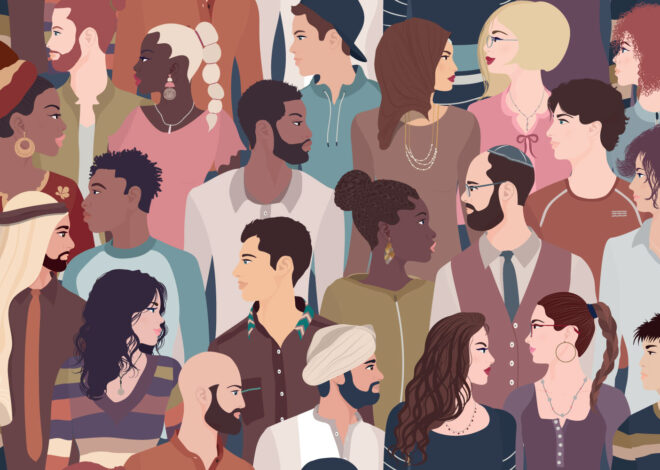Join the Movement: Activating Nonprofits for Lasting Change
Why nonprofits, particularly those supporting marginalized communities, must become active players in the landscape of advocacy.

Everything is political.
The way we interact with our community and the resources we have access to can all be traced to politics and policymaking. The new home built in my neighborhood was shaped by local policy and the decisions of elected and appointed leaders. The cleanliness of my tap water is the result of public investments in infrastructure and cleaning facilities. My next meal comes from a food industry regulated by various levels of government, who are all in turn shaped by leaders hired by public dollars, elected by local voters, or appointed by those elected leaders.
This is why I believe that organizations committed to providing services for marginalized communities must take an active role in advocating for their communities. To truly serve our communities, we must be educators, connectors, and advocates within our governments alongside policymakers.
Advocacy is Crucial
Advocacy can be a so-called “third rail” for organizations with a 501(c)(3) tax-exempt status. Fear of breaking the law, losing your tax designation, or losing foundation funding are all or individually enough to keep organizations far away from fulfilling their role as advocates. It’s not uncommon to hear someone in the community development field say “we don’t do advocacy.” Some even take on the mantles of “equity” and “justice,” yet stop short of using their platforms to speak truth to power.
But nonprofits must be advocates. If we are in proximity to under-represented and under-invested communities—if they are sharing their lives with us—it’s our duty to use our platforms to elevate the issues they face and advocate alongside them for a better way.
A Community Asks for Help
One of the highest-profile efforts my organization, Inclusive Action for the City, has been a part of is the LA Street Vendor Campaign, a now 14-year effort to stand up for Los Angeles street vendors who were being criminalized by law enforcement. Unlike most other major cities in the country and despite the popularity of street vendors, Los Angeles previously had no system for sidewalk vendors.
However, it was the voices and experiences of street vendors that established the campaign. The founding vendor leaders of the effort recall their stands being swept up in a surprise raid to “clean up” the street. After this incident, they actively sought help from the nonprofits already working in the community. These nonprofits were building affordable housing, offering social services, and writing research papers on the experiences of community members; however, none proactively helped protect their businesses from a government that refused to recognize them as legitimate. They pleaded with some of the founding organizations of the campaign, calling upon us to get out of our lanes and be bold enough to demand street vendor legalization.
The organizations took their lead and formed a coalition. Our coalition spent countless hours developing research on the contributions of street vendors, educating street vendors about local policymaking process, and connecting street vendors to elected officials and influencers who had the power to improve their quality of life. As a consistent figure at hearings throughout the years, our coalition provided public comment, talked to the press, and generally made sure that leaders knew that we wouldn’t take no for an answer. Los Angeles had to legalize street vending.
The tenacity of the founding vendor leaders, alongside the work of thousands of other street vendors, contributed to a groundswell of new legislation within the past decade. This legislation not only legalized street vending in Los Angeles but also passed two state policies to create systems for sidewalk vendors throughout California. Most recently, a new chapter in the state’s retail food code was also created; this new chapter recognizes street food vending as a viable business that deserves its own public health permit.
Advocacy from Inside
What distinguished this campaign’s success was the leadership of street vendors themselves, who were members of the movement’s steering committee. This committee reviewed every legislative proposal and amendment throughout the course of many years. And this tenacity of the street vendor community then invigorated nonprofit organizations, who weren’t afraid to risk reputations, funding, and relationships to stand up for members of the community.
In retrospect, I wonder what would have happened if our organizations had been better versed in advocacy to begin with. Would our impact have been greater if our organizations were able to meet the experiences of street vendors with proactive advocacy tools designed to address the injustice taking place? Perhaps we would have been able to move more quickly if our organizations had already engaged philanthropy to support organizing and public education. It is my hope that by sharing our story, other organizations might understand how we have learned the importance of proactive community advocacy.
Consider the community you serve: who might you advocate for in ways that align with your mission? What policies might you help enact that would benefit your community and possibly even seek redress for systemic inequalities?
Of course, policy advocacy may be new terrain for some organizations. But beginning to fulfill this role doesn’t have to be complicated.
Here are five steps I’ve shared with nonprofit peers who want to advocate for the communities they serve:
1. Talk to a lawyer.
Of course, there are rules that limit the amount of advocacy that a 501(c)(3) nonprofit organization can do. A consultation with a lawyer who specializes in nonprofits (we’ve used Bolder Advocacy) can help you and your board understand the parameters of nonprofit advocacy. Make sure you learn these rules and understand clearly what is allowable and what may be prohibited.
It is important to note that there are federal limitations on lobbying and endorsing political candidates.[1] However, your local city or county may have its own unique restrictions on advocacy, too. By understanding the rules (both federal and local), your organization can make informed decisions on the type of advocacy you can be engaged in. On our end, we found that the rules readily allow for the type of advocacy that our community members need and even help us understand how to participate in the policymaking process.
2. Create a “power map” to understand who is influencing systems.
Every nonprofit should know the basics on how their local government works as well as who represents them. A power map can help situate these actors according to whatever issue is a priority for your constituents.
Take some time to learn about who your elected officials are, what they do, and who may have some influence over the systems impacting your community members and/or the issues you care about. Through this scan, you may find that some influencers are not even elected or appointed, and, in fact, your organization might be closer to them than you think.
3. Reach out to other organizations in your region.
Change happens most effectively when you work with others. Spend time learning who in your community is advocating around priority issues. There might be another organization or another group of people who have begun advocating on that issue. However, they might need support from people who have lived experience or are in direct proximity to the problem and potential solution (that’s you!).
Collaboration and coalition-building takes time. It is also usually under-funded and under-valued. But make no mistake—coalitions win.
4. Engage the people your organization serves in the advocacy process.
There is no better policy analyst or advocate than the person who is impacted by the policy. Invest in building the capacity of community members to act as the lead advocates for the issue.
In the LA Street Vendor Campaign, the coalition prioritized seats for street vendors on the campaign’s steering committee. In between meetings, our coalition partners cultivated a network of street vendor groups throughout the city who tracked every step of the policymaking process. In hearing after hearing, the most compelling voices were not from organizational leaders, but from the street vendors themselves.
Remember to center the voices of the people to advocate for the people.
5. Be specific and persistent.
Many of us work in environments that have a host of “wicked problems.” These issues are so intractable and interconnected that they often overlap and conflate with each other—the “system” in systemic inequalities, as it were.
In these cases, it is important to be specific about what you are advocating for. Say you’re addressing a housing crisis in your city. Outline one to three specific policy levers you want to pull: these might include changing parking requirements or inclusionary zoning, for example. Then make sure that every person you talk to is clear about what specific lever you’re pulling.
However, because so many issues are interconnected, you may feel the pull to get involved in other campaigns. Never forget your specific goal and stay persistent. It took us 10 years to legalize street vending in LA, and we ended up having to advocate for a state policy along the way. But even though our scope expanded, we still stayed true to our intended purpose of redressing local street vendor harassment by law enforcement. And in the end, our targeted persistence paid off.
Making Our Hands Visible
We must be aware of how politics shapes our lives. However, if we’re not willing to engage with it in some way, we are abdicating our role in shaping our lives. We are waiting for other people to make a decision for us.
The street vendor leaders that formed the LA Street Vendor Campaign (and then the subsequent CA Street Vendor Campaign) knew that even though advocacy was not part of their day job, they had a duty to speak up to make change. And as they rose up, they took us—the local nonprofit organizations—with them.
To address the entrenched problems communities face every day—problems like income inequality, the housing crisis, climate change, and many more—nonprofit organizations must provide support today while also advocating for long-term, systemic change for tomorrow. We must listen to the needs of our community members and uplift their voices so that those in power can hear. We cannot abdicate our responsibility to our communities. Instead, we must work with our communities to address the challenges they face.
Sources
[1] For more information on lobbying, check out Pat Libby’s Beginner’s Guide to Lobbying for Nonprofits.
About the Author
Rudy Espinoza is the Executive Director of Inclusive Action for the City, a nonprofit community development financial institution based in Los Angeles whose mission is to bring people together to build strong, local economies that uplift low-income, urban communities through advocacy and transformative economic development initiatives.Rudy specializes in designing economic development initiatives in low-income communities, building private/nonprofit partnerships, and training the working poor to participate in the socio-economic revitalization of their neighborhoods.
Under his leadership, Inclusive Action helped legalize street vending in Los Angeles, passed statewide legislation to support street food vendors in California, deployed over $4,000,000 in low-interest micro-loans and grants to under-served entrepreneurs, and co-created a unique, commercial, real estate initiative that preserves small businesses in gentrifying neighborhoods. Rudy serves on the Board of Directors for UNIDOS US, the United Way of Greater Los Angeles, the Center for Nonprofit Management and Abode Community Housing, and as an appointee to the California Organized Investment Network (COIN) Advisory Board. Rudy is a Civil Society Fellow, an initiative hosted by the ADL and Aspen Institute.
Articles on Blue Avocado do not provide legal representation or legal advice and should not be used as a substitute for advice or legal counsel. Blue Avocado provides space for the nonprofit sector to express new ideas. Views represented in Blue Avocado do not necessarily express the opinion of the publication or its publisher.












For a free nonprofit sample public policy guidelines the board can adopt to look at these type of issues see
Yes! Yes! Yes!
Organizations should learn how to advocate, not how not to advocate.
“Make sure you learn these rules and understand clearly what is allowable and what may be prohibited.”
Rudy and the work of Inclusive Action is on point and critical to the transformation of low income communities in Los Angeles.